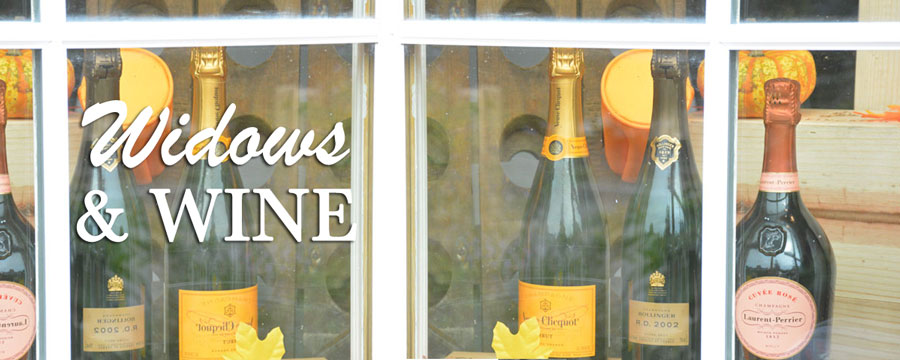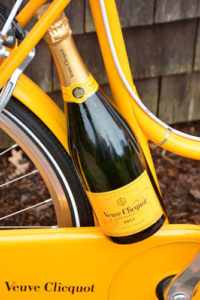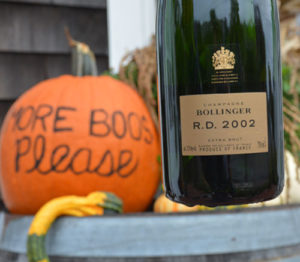
Widows & Wine: The Petticoat Row of Champagne
October 3, 2018As you leisurely stroll down the cobblestone streets of Nantucket, one can only imagine what it was like during the life and times of the historic whaling days of the 19th century. A plethora of stores owned, managed and operated by women is not new to our island. This is evidenced by the history of the so-called “Petticoat Row” business area where many of the businesses on Centre Street between Main Street and Broad Street were established and ran by female proprietresses back in the day.
Some might say that the Petticoat Row of Nantucket was a result of the need for survival. While men were out ‘on the whale,’ the women left behind needed to make a wage to support their families, but also create a financial security in the off chance that their husbands had an unprofitable voyage or, graver yet, the ill-fated were lost at sea. This opportunity offered the women a sense of community where they may otherwise have felt lonely, along with a distraction to the possible perils of their soul mates. More importantly, however, is that these women had good business sense, knowing how to work within their means while hiring and working with other women.
Nantucket also had a Mariner’s Power of Attorney in effect that further strengthened the influence of women in business. In essence, it was a precursor to today’s power of attorney in which it was a legal document that gave women whose husbands went out to sea legal rights typically denied to women, such as buying or selling property. All of these factors combined ultimately had a direct effect on the economy of the island and therefore how Nantucket was perceived by the outside world. Women today still manage much of the economy here in regards to owning and operating businesses on island, whether it is selling wares at the farmer’s market, a lovely downtown dress shoppe or the local wine store.
In a slight contrast to this is on the other side of the pond is how the power of mourning the loss of their young husbands changed the face of what we know today as Champagne. In France in the 19th century, women were only permitted to become a CEO of a business, or perform other financial tasks, if they were a widow. Otherwise, they were dependent on either their father or husband. During this time, there were a number of Champagne widows, possibly a result of husband’s working in unhealthy conditions in the winery or vineyard and succumbing to deadly illness before the invention of antibiotics, who took over the reigns of their husband’s wine production ventures. The benefit of becoming a widow in France at this time not only enabled a woman to be allowed to manage financial transactions, but also led to them being respected as a business person.
In the French language, “Veuve” translates to widow. The name has been used as a moniker for a variety of Champagne houses, from smaller brands to one of, if not the most well-known in the world. At one point, businesses were searching for the widow in their family to use as the face of their Champagne house as the marketing value of having this was such a part of the brand. While people will say “Veuve” in reference to one specific yellow labeled bubbly, there are actually numerous Champagne houses with this in the brand name. Think of it as similar to saying just the word “Château” or “Domaine.”
Champagne itself may be delicate and effervescent, but the powerhouse women who managed these houses and made it what it is today were audacious risk-takers and full of ambition.
Barbe-Nicole Ponsardin Clicquot was born in Reims to a wealthy family. She married young and in 1805, her also young husband died suddenly after harvest leaving her as a 27 year old widow. She took what was a tragedy in her life and eventually transformed her husband’s Champagne production business it into a global empire. As a pioneer visionary, she developed a technique referring to as riddling that would remove the yeast leftover from the secondary fermentation that occurs in the bottle to create the effervescence. Previously, this sediment was left in the bottle resulting in a cloudy wine. With her creation of the table de remuage, the bottles were held upside down and regularly rotated so that the dead yeast would gather near the actual top of the bottle. Once the sediment had completely settled near the cork, the cork was removed to allow this sediment to be released. Then a small amount of additional wine was added to top the bottle of to its previous amount. Voila! Through her passion and determination, Madame Clicquot then used her business acumen to tap into the European market. Later, she branched out to Russia and eventually the United States where it is most well-known today.
While the Champagne house of Laurent-Perrier was originally founded in 1812, it wasn’t until Eugénie Hortense Laurent, who had inherited the property after her Champagne widow mother’s passing, sold the business to Marie-Louise Lanson de Nanoncourt in 1939 that it became known for what it is today. De Nanoncourt’s husband died previously during World War I. Coming from the family lineage of Champagne houses Delamotte and Lanson, it was at this time that she took a great risk and decided to leave the family business to branch out on her own and purchased Laurent-Perrier. She managed to keep the business afloat during WWII as her sons were fighting with the French Resistance. After WWII, her son Bernand de Nanoncourt began an apprenticeship with the family in which he learned every aspect of the business – from winemaking, to vineyard management and sales – eventually becoming Chairman and Chief Executive of Laurent-Perrier. His daughters, Alexandra Pereyre de Nanoncourt and Stéphanie Meneux de Nanoncourt, are the current generation that continue to maintain the quality and reputation of the brand today.
Champagne Bollinger has been in existence since 1829. Many generations later, Elisabeth Law de Lauriston Bollinger married the great-grandson of one of the original founders of this generationally family owned and operated business.
Known more affectionately as Lily, Madame Bollinger was passionately involved with the Champagne house and had a bubbly wit about her. After the death of her husband in 1941, she saw the House through the war, along with the German occupation of the region. From the 1950’s until her death, she keenly marketed and represented the brand internationally in her sophisticated style as she traveled the world with bottle of Bollinger, often nicknamed as just “Bolly.”
Here is a famous quote from her in regards to Champagne: “I drink it when I’m happy and when I’m sad. Sometimes I drink it when I’m alone. When I have company I consider it obligatory. I trifle with it if I’m not hungry and drink it when I am. Otherwise, I never touch it—unless I’m thirsty.”
While Petticoat Row is the story of women who were possibly preparing for the worst, Champagne is the story of widows who made the best of what life before them. In both scenarios, the strong, vigilant women not only rose to the occasion, but often outshone their male counterparts in such endeavors.



Comments